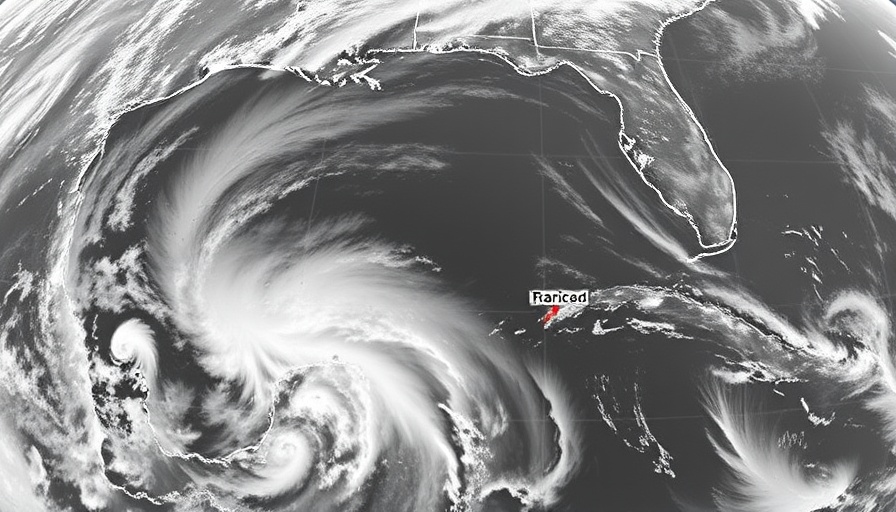
The Developing Tropical System: A Closer Look
As of July 4, 2025, the National Hurricane Center has identified an area of low pressure approximately 100 miles off the northeast Florida coast. This system is generating increasing showers and thunderstorms and has a reported 60% chance of developing into a tropical depression or storm in the coming days. Experts warn that despite the uncertain path of this system, Floridians should prepare for heavy rainfall and potential severe weather.
What to Expect: Conditions Ahead
Forecasters share that environmental conditions over the Florida peninsula could favor the development of this system, which is expected to drift northward. According to the NHC’s predictions, a short-lived tropical or subtropical depression is likely to emerge by late Friday or Saturday. It’s vital for residents to remain vigilant, as heavy rain is forecasted to impact various regions across Florida and potentially the Carolinas.
A History of Hurricane Seasons: What Makes This One Unique?
This system marks the first significant development of the 2025 Atlantic hurricane season, which officially runs from June 1 to November 30. The National Oceanic and Atmospheric Administration (NOAA) forecasts indicate an active season with 13 to 19 named storms anticipated, of which 6 to 10 are projected to become hurricanes. The onset of this first system should serve as a reminder for Floridians to ensure that their hurricane preparations are up to date.
The Impact of Heavy Rainfall: A Potential Dilemma
Already, Central Florida has witnessed up to 4 inches of rain from previous systems, and there’s concern that this latest low-pressure area will exacerbate the situation. The prediction of an additional several rounds of rain raises alarms about flash flooding and possible infrastructure stress. Emergency services are on alert, as wind gusts varying between 35-45 mph could accompany the storms, adding to the potential for falling trees and power outages.
Preparedness and Response: Steps to Take Now
With the storm's potential impact looming, local authorities recommend residents stock up on essential supplies, including water, non-perishable food, and medications. Having an emergency plan that includes evacuation routes and communication strategies is crucial during hurricane season. As the situation evolves, following updates from local weather services and the National Hurricane Center will ensure residents remain informed and prepared.
Future Predictions: What's Next for this Year’s Hurricane Season?
December marks the end of hurricane season, but experts suggest preparation should be an ongoing exercise. The possibility of experiencing multiple storm systems over the season prompts discussions on advancing meteorological tools and community responses. Whether this developing low pressure strengthens or dissipates, coastal residents must stay alert, employing lessons learned from previous seasons where storms caught many off-guard.
Community Support: The Importance of Coming Together
In the face of natural disasters, communities have historically come together to support each other. This hurricane season can serve as an opportunity for neighbors to collaborate, sharing resources, skills, and local knowledge to weather through storms. Engaging local organizations and response teams can furnish families with necessary resources during challenging times.
Conclusion: Stay Informed and Ready
The evolving situation off Florida's coast serves as a reminder of the power of nature and the vital importance of preparedness during hurricane season. The 60% chance of system development may seem slim, but history has shown that even minimal predictions can bear significant consequences. Ensure you are informed, prepared, and ready to act, as guidance from the authorities plays a critical role in ensuring safety.
 Add Row
Add Row  Add
Add 



Write A Comment